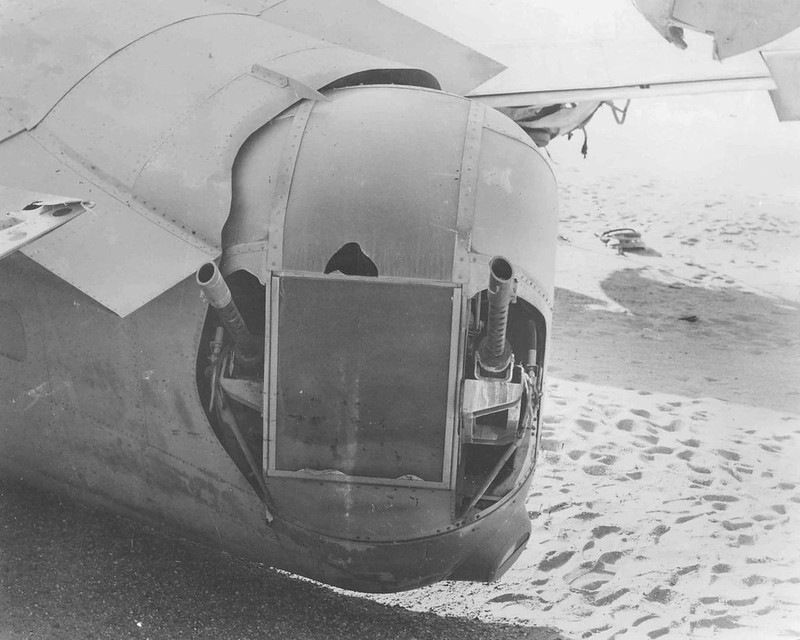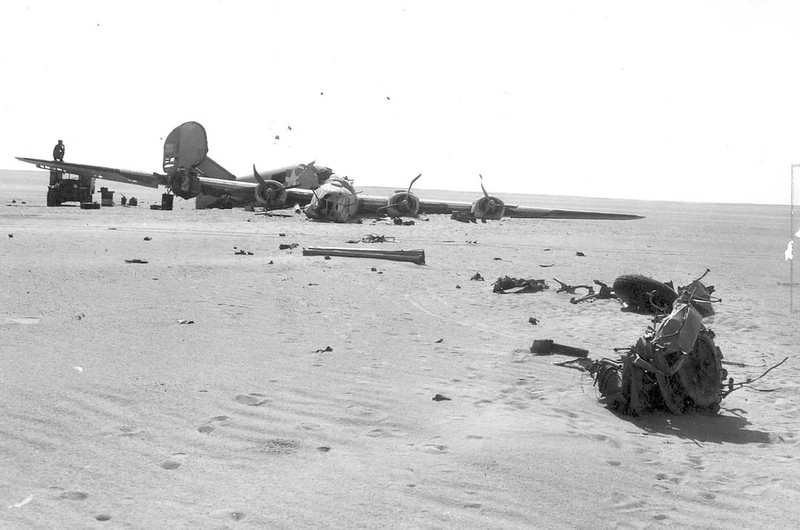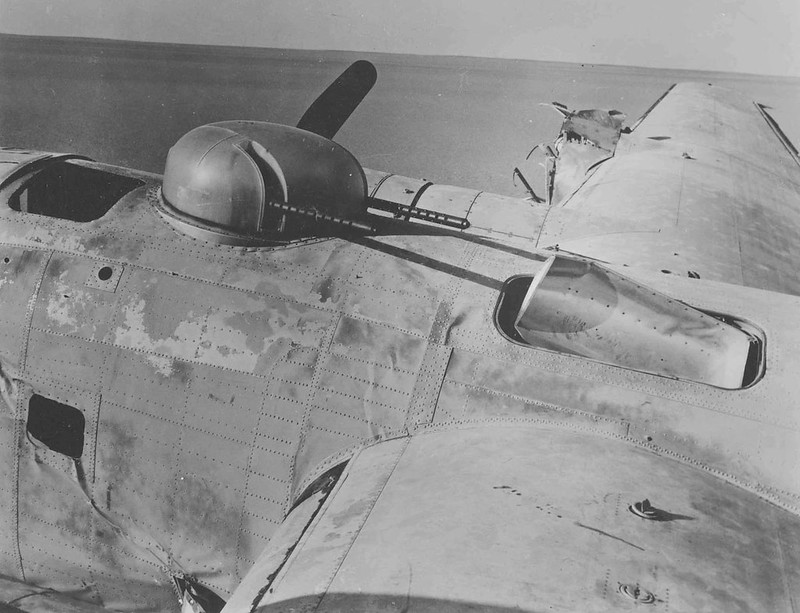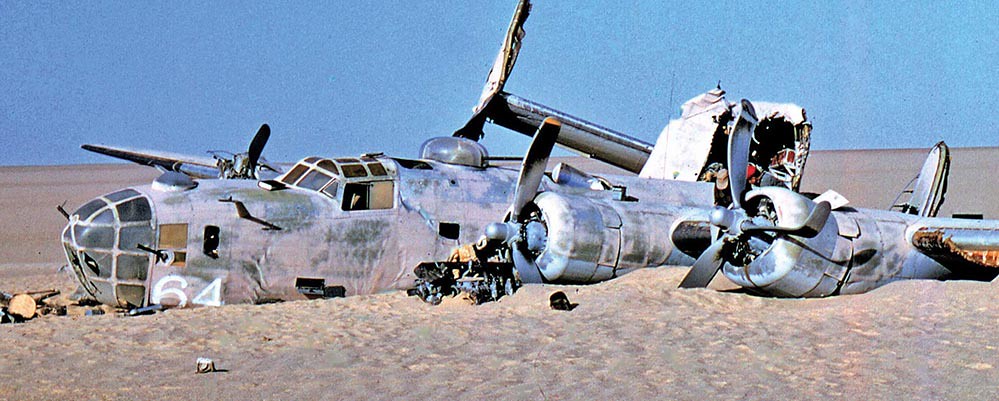'Lady Be Good': the ghost bomber who landed alone and was missing for 16 years
In the aeronautical field, the expression "ghost plane" is often used to refer to one that flies without having any crew on board.
An aircraft built in 1942 and sent to Libya
One of the most famous ghost planes in history was a World War II Consolidated B-24D-25 Liberator long-range heavy bomber, serial number 41-24301 and build number 1096. This aircraft was built in December 1942 and assigned to the 514th Bombardment Squadron of the 376th Bombardment Group, part of the 9th Air Force of the United States Army Air Forces (USAAF).

The plane was painted entirely olive drab, with a circular American cockade with the white star and a yellow outline, and a large identification number 64 painted in white on both sides of the plane's nose. Its crew painted the nickname of this plane on its fuselage: "Lady Be Good". On March 18, 1943, the plane was sent to North Africa, specifically to the current town of Suluq, in Libya. On April 4, 1943, shortly after 3:00 p.m., it took off for Naples on its first mission, with the aim of bombing that Italian city.

The 'Lady Be Good' was lost returning from her first mission
As soon as they took off, a strong sandstorm arose, forcing nine Liberators to turn back. The "Lady Be Good" and three other Liberators continued their flight, reaching their target in poor visibility and strong winds, which caused the protagonist of this story to end up flying alone on his return trip to base. At 12:12 p.m., the pilot of the "Lady Be Good" radioed his base that his automatic direction finder was not working, asking them to indicate his course by launching flares to indicate the location from the base. This was done, and the plane flew over its base, but did not see the flares and continued its flight south for two hours.

Everything indicates that faced with the prospect of the "Lady Be Good" running out of fuel, the crew jumped out of the plane at 2:00 in the morning, and the B-24 continued its flight with no one on board for 25 kilometers, landing abruptly in the Libyan desert, in the Calanshio sand sea.

After the disappearance of the plane, a search mission was organized in Suluq, but not the slightest trace of the B-24 or its crew was found. From this moment on, the plane left the field of history to delve into the realm of mystery. The USAAF assumed that the plane had crashed in the Mediterranean and abandoned the search. The nine crew members of the "Lady Be Good" were classified as missing in action (MIA). In 1945, World War II ended without anyone having news of those aviators, whose trail had been lost in the Libyan desert sands.

The discovery of the 'Lady Be Good'
The years passed, and on May 16, 1958, the crew of a Silver City Airways Douglas C-47 Skytrain observed the remains of a B-24 in the Libyan desert. The wreckage was sighted again on June 15. On November 9, 1958, an exploration team from the British Oil Company informed the authorities of the discovery of the remains of an airplane in the same place. There was no news of any plane crash in that area, so the matter was not even investigated, but the British exploration team marked the location of the wreckage as a geographical reference for further exploration.

A few months later, on February 27, 1959, a British surveyor, Paul Johnson, spotted the remains 708 km southeast of Suluq. Finally, a US Air Force team based in Wheelus, Libya (in the part of the country that was then under British control), deployed to the site on May 26, 1959 . 16 years, one month and 22 days had passed since the accident of the "Lady Be Good" and the disappearance of its crew.

Upon arrival at the accident site, the US military observed that the B-24 had broken in two when it landed hard on the sand, but the plane was otherwise in good condition. Its radio and machine guns were still functional, and inside it was found food, water, and even a thermos of tea, but no sign of its crew.
The search operation for its crew
To solve the mystery of the nine crew members of the "Lady Be Good", the US Army launched a search operation in the Libyan desert in February 1960. Finally, on February 11, after 17 years, ten months and seven days missing, five bodies were found in the desert: they were the pilot, 1st Lieutenant William J. Hatton; the co-pilot, 2nd Lieutenant Robert F. Toner; the navigator, 2nd Lieutenant D.P. Hays; radio operator Sergeant Robert E. LaMotte; and one of the gunners, Sergeant Samuel E. Adams.

Evidence was found at the scene that the crew members had fired flare guns to be located, and that three of them had continued walking north. The search mission was extended, with the help of the USAF, but without success. Finally, on May 12, 1960, a British Petroleum team found the remains of Sergeant Guy E. Shelley, another of the artillerymen, 38 kilometers northeast of where the five bodies had been found. A few days later, a US Army helicopter found the remains of Sergeant Harold J. Ripslinger, flight engineer, 320 kilometers from the crash site and about 42 kilometers from the place where he was found the body of Sergeant Shelley.
In August 1960, another British Petroleum team found the remains of another crew member, 2nd Lieutenant John S. Woravka, a bombardier. In total, eight bodies of the nine crew members of the "Lady Be Good" had already been recovered. The remains of Sergeant Vernon L. Moore, gunner, were never found. It is believed that he was part of the group of three crewmen who continued north in search of help, along with Sergeant Shelley and Sergeant Ripslinger. There are reports that a British military patrol found a body in the desert in 1953 and buried it, without further investigation as there was no news of any plane crash in the area.

What happened to the crew of the B-24?
From the objects found with the corpses, including a co-pilot's diary, it is known that the crew did not know they were flying over the desert when they jumped: they thought they were over the Mediterranean Sea. They never understood how they had penetrated more than 600 kilometers into the Libyan desert. The crew did not find 2nd Lieutenant John S. Woravka, because his parachute failed and it is probable that he died when he fell to the ground.
The crew believed they were closer to the coast and walked north trying to reach it. They left behind various objects to be located in a possible search operation: footwear, vests and parachute remains, among other things. They walked more than 100 miles and survived 8 days on a single canteen of water. The five crew members found together stayed behind, probably too exhausted to walk, while three others headed north for help. . Finally, the desert ended their lives.

The remains of the 'Lady Be Good' today
At the time of the plane's discovery, some parts of the B-24 were taken to the US. Parts of the plane are on display in US military museums. Finally, in August 1994 the remains of the "Lady Be Good" that remained at the site were taken to Tobruk. Today, those remains remain in a Libyan military base.
Serve this entry as a memory and tribute to those nine aviators.
---
Main photo: US Army
|
Don't miss the news and content that interest you. Receive the free daily newsletter in your email: |
- Most read
- The 'hole' without civil flights around Paris during the opening of the Olympic Games
- Stunning footage of the F-15QA Ababil in flight recorded from its cockpit
- The firearms used by the Pontifical Swiss Guard, the smallest army in the world
- The most distant deployment of the Spanish Air Force in Australia and New Zealand
- Eurofighter vs F-35: the opinions of professional pilots on these advanced fighters
- The first photo of an F-16 fighter with Ukrainian insignia and the details it has revealed
- This is the driver station of an M1 Abrams tank and the impressive start of its engine

 ES
ES







Opina sobre esta entrada: